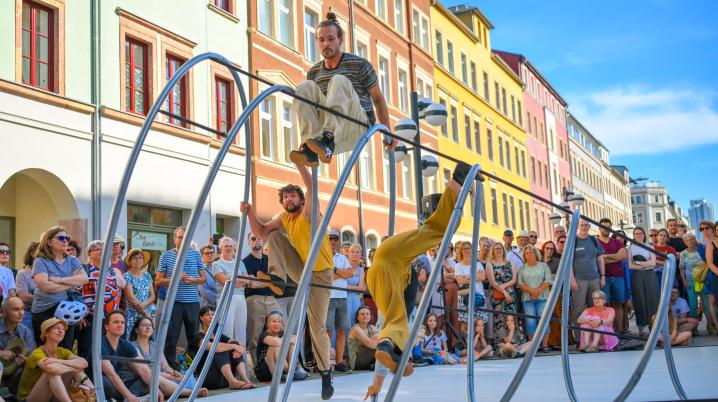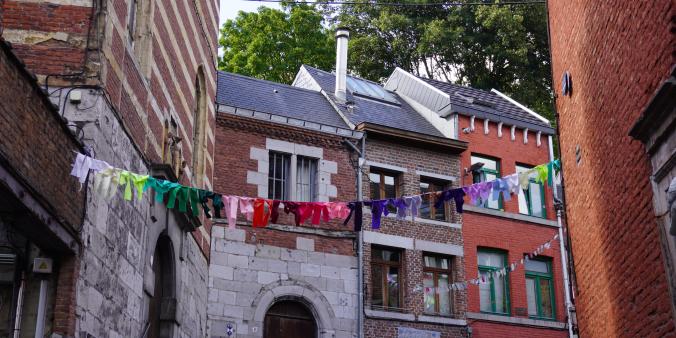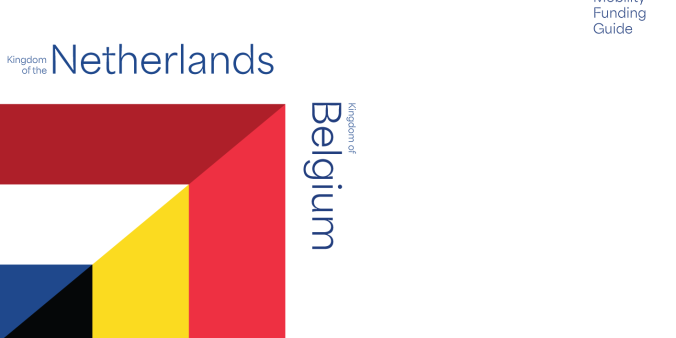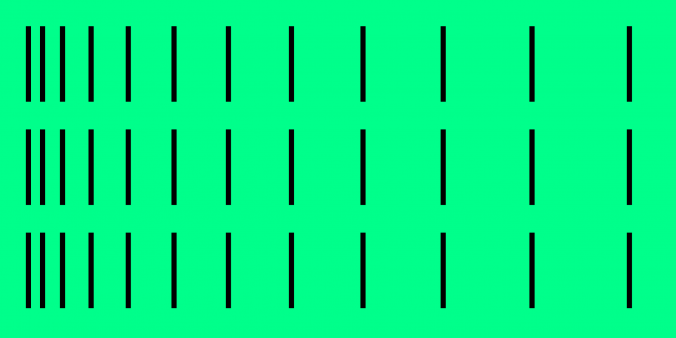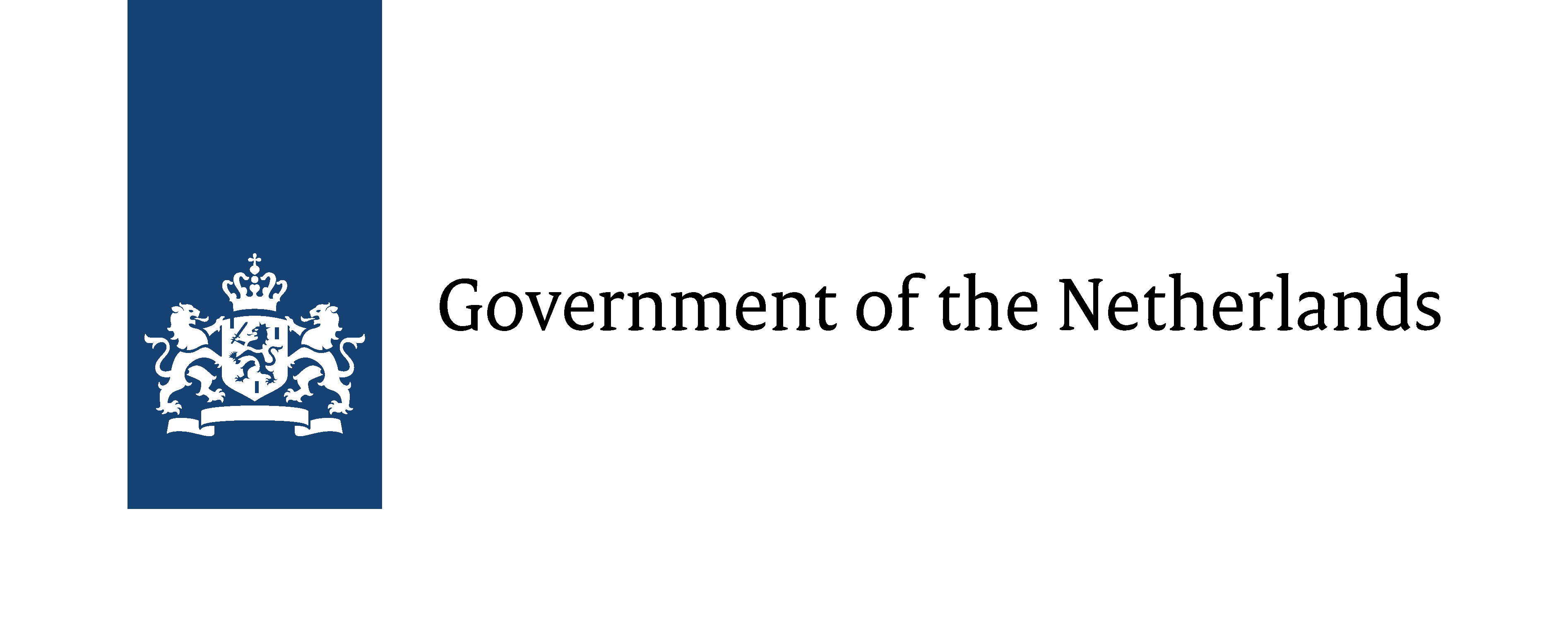
This is the last of the three-part article series with a focus on the three language communities in Belgium. In the third article, we focus on Flanders, the Dutch-speaking part of Belgium, dive into the role of cultural centres/cultuurhuizen (here referred to as CCs) and explore what it means to work internationally. For this, our advisor Astrid Mörk interviewed Bavo De Smedt, Belgian circus artist and co-founder of TeaTime Company. Bavo De Smedt graduated from Fontys Academy of Circus and Performance Art in Tilburg and co-founding TeaTime in 2017. Our DutchCulture database lists 19 performances of TeaTime in Belgium in 2024, many of which took place in CCs.
Can you tell us more about TeaTime and your work?
"I met Pieter Visser and Hannah Rogerson at Fontys. We were good friends and shared the same artistic ideas, so we started our own company. For two years, I have been the artistic leader, and we work with Buro Piket, who helps us manage the business side. TeaTime creates performances where the borders of circus and dance disappear to create our own hybrid movement language. We make complex ideas accessible, using charm, humour and strong imagery. We always use a simplistic, abstract object, and discover the relationship between that object, us as performers and the audience. In our latest show, Ripple, we work with a giant metal spiral. You have to react to it when it rolls towards you. So the story comes from the object; we are researching which story the object is telling."
What kind of projects do you do abroad?
"First, we create new work and seek opportunities to co-produce with festivals and theatre abroad. For example, we did residencies in Ireland, Belgium and Germany. Then, we of course do shows at festivals and in theatres. Back in the days, we were actively looking for places that could support us. The first years are always very hard. Now, people have seen our performances and know what we are doing, which is why we get booked by festivals and theatres more. Programmers see our performance and book us at their venue. We also give workshops and teach other professionals from the circus or dance field, for example, in France, Portugal or Taiwan."
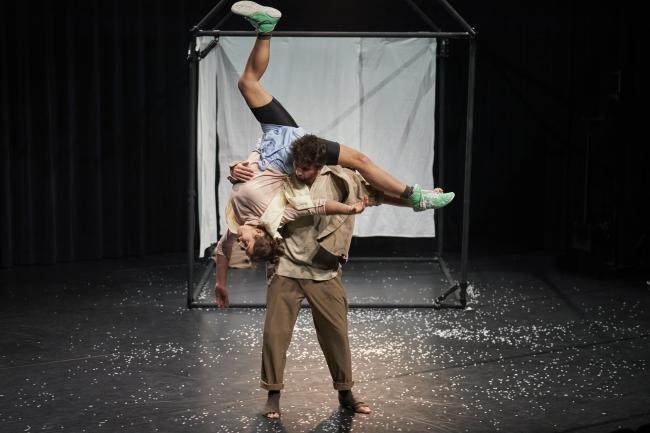
How did you build up your network in the first years?
"The academy in Tilburg has a big network within the Netherlands, so we knew a few people and venues here already. We also conducted our own research and approached teachers, programmers, and venues or bookers. The first time we got approached was by Rotterdam Circusstad. They have seen our solo work at school and knew we were working together, so they asked us to do a performance for the festival, which was a great stepping stone. Festivals like Circolo or Circusstad helped a lot in the beginning, in terms of sharing their network but also giving support to new talents."
What has working internationally brought you?
"You make artistic work and want to share it with the world. The more people get to see it, the happier I am, because it is something I believe in. When you perform in different countries, it is so nice to witness the small differences. Even between the Netherlands and Flanders, you feel the cultural differences. For example, when we perform in the Netherlands, the audience is a bit more trained; they watch a performance and really get into it. At the end, they give everything – they clap, they stand up. In Belgium, there’s a bit more reservedness, a bit more giggling. You envision your performance, and then you perform in another country, and suddenly, things turn out differently. For example, certain things suddenly appear to be funny. Even in countries where we don’t speak the same language, we feel the audience is with us during the performance. This is what I love, and you can only have that when you work abroad. Speaking the same language, out of movement, relations and reactions, on stage is super interesting. I love this concept of things becoming readable for the audience when you’re on stage without saying a word. It makes us human. And another benefit of working internationally is that it gives life experience. It is interesting to talk with programmers and other artists about the different scenes; it opens up our worlds. And I love that performing arts allows me to see the world, even though the whole organisation is a lot of work."
Can you tell us more about performing at CCs in Flanders?
"CCs offers a different kind of support. It can be financially, or they offer their space to create new work, rehearse or do final touches, functioning as workshops. Many CCs are open to this when you ask them. For a new project, we can work at CC Strombeek for three days to finalise our performance and work in their theatre with the whole light set-up and a technician assisting us. This actually brings us to another thing that we are doing at CCs, which is showing our work in progress. Some larger CCs are known for that, and they have an audience who is into that. They even come back to see the show again when it’s done. And of course, we often get booked by CCs to simply perform, and then we are in their booklet, on their website, and they advertise us."
What makes CCs in Flanders so special?
"Quite often in Flanders, when you perform in a smaller CC, they provide you with food. Oftentimes, a volunteer from the town cooks for us, which is very personal. Some CCs work together with libraries, because they’re in the same building, or the CC is combined with the city hall. And of course, you have CC, which are big theatres, such as Dommelhof or 30CC. They are accessible in that sense. They work with schools a lot, so TeaTime also does school performances. Kids go into an equipped theatre and get the whole experience; they learn what it is like to go to a theatre."
What do you think is the role of a CC?
"Flanders is not big, so the CCs are well-connected with each other and their local environment. They offer a network. Also, they make it possible for artists and makers to create work for smaller audiences. It doesn’t need to be work that works for a big audience. CCs open up for smaller, daring and experimental projects for more defined audiences. There’s art that only works for, let’s say, 20% of the people, but that 20% loves it, and gets to see it in CCs. This might be a difference compared to a bigger theatre, in my opinion."

Tell us more about the residency you did at 30CC in Leuven.
"Back then, we were looking for a space to work on our third performance, A Matter of Time. We needed a space with a ballet floor for the right grip and where we could show our work in progress. 30CC has different locations that offer to artists. I think nowadays it goes through an application via Cirklabo, but back then, we just approached them. 30CC has a festival called CIRKL, so they could also book us. We were there for a week, and it was nice to work undisturbed. Some CCs have a whole team to support you, people working in the field who think along with you. Another example is our residency at Dommelhof. As we were creating on stage, we could ask the team on the spot for feedback and test out the light. We wanted something out of steel for the performance, and the team just created that for us."
What advice would you give to other makers who are planning to work in Flanders/at CCs?
"There are cultural differences between the Netherlands and Flanders. I advise you to notice them, because it will enrich your experience. If you want to work at a CC, it’s good to look up the art scene of the specific CC – are they specialised in dance, circus or something else? Communicate with the CC what your work is about. CCs are open to sharing ideas; they are very approachable. Dare to talk to them and to ask them for advice. Also, accept that bigger is not necessarily better. Enjoy performing at smaller venues. Enjoy that a local is cooking for you. Enjoy the slightly older building you are working in, or working with older technology. It has a charm. Don’t make it a problem, think in possibilities."
Last question, what do you want the world to know about contemporary circus?
"Contemporary circus is more than tents, clowns or animals, and that is not really known yet among many people. Of course, you have what we now call traditional circus, which still exists. Contemporary circus can also be on a very large scale, like Cirque du Soleil. It’s really good, I'm a big fan, but it seems more like a 'show' circus in my opinion. What I love about contemporary circus and the field in which TeaTime works is that it can also be with a deeper meaning, less bombastic and on a smaller scale to get the audience on the edge of their seat."
Funding
Are you looking for funding for your project? Check out our updated Cultural Funding Guide for the Netherlands and Belgium, as well as the open call for support from the Netherlands Embassy in Brussels (deadline 12 November). Or contact our Belgium Advisor Astrid Mörk.
